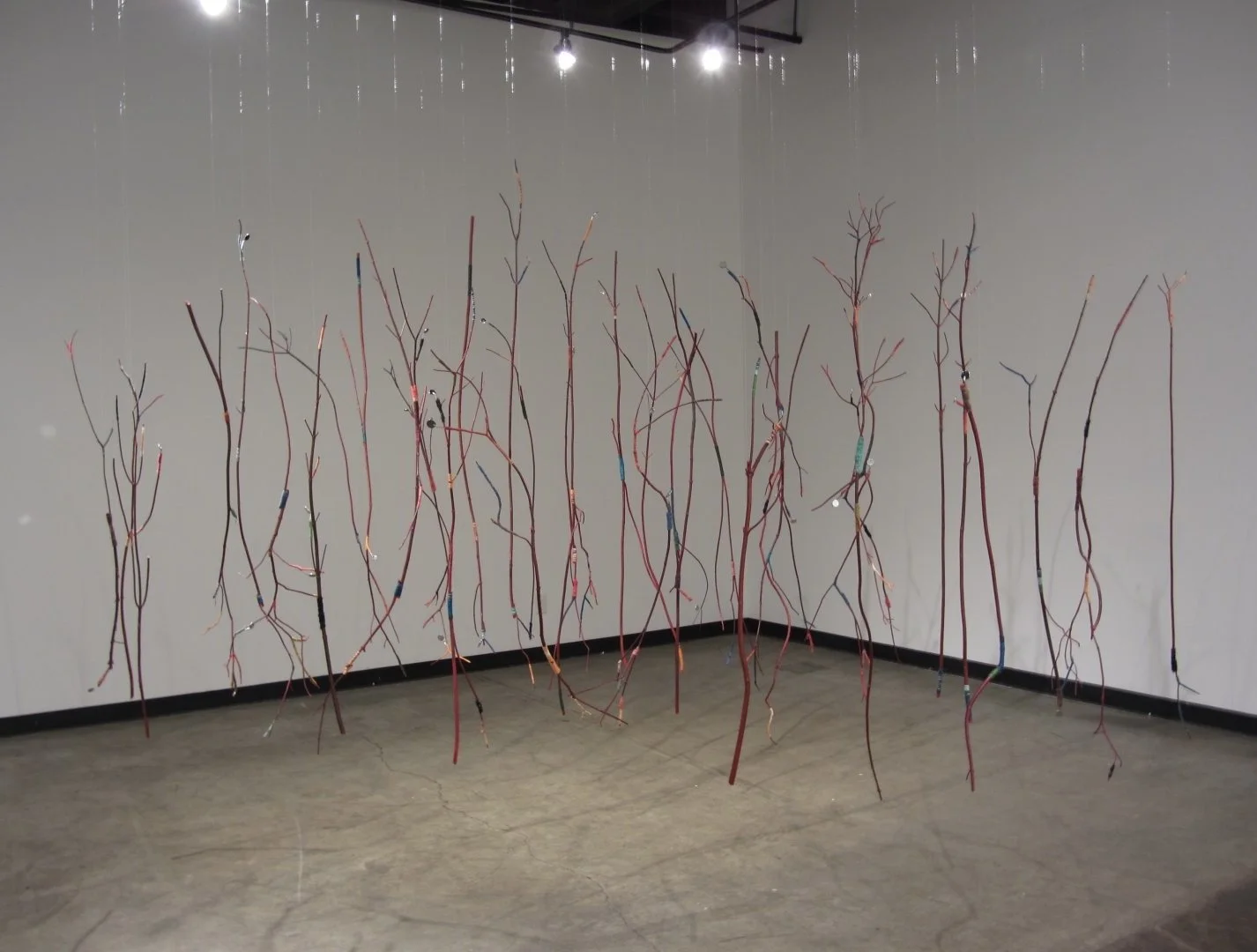Stir Q&A: Imagine Picasso curator Androula Michaël talks Cubism, collage, and the many faces of the master
The art historian says the giant projections bring a new appreciation for his brushwork, patterns, and points of view
Imagine Picasso projects images across walls, floors, and origami-like sculptures. Photo by Jean Sebastien Baciu
Imagine Picasso runs at the Vancouver Convention Centre from October 27 to January 8, 2022.
THE SAME FOLKS who brought Imagine Van Gogh to the Vancouver Convention Centre this summer and fall are now ready to give you an up-close look at the mindblowing range of Pablo Picasso’s work.
But Imagine Picasso will be a different experience for viewers—and not just because the artist most famous for Cubism has a separate style from post-Impressionist Van Gogh. The show, created by Annabelle Mauger and Julien Baron in collaboration with art historian Androula Michaël, and French architect Rudy Ricciotti, not only projects the prolific Spaniard’s famous works in high-resolution detail on eight-storey screens, but also across three-dimensional origami-like sculptures—a format based on the painted paper constructions that Picasso crafted for his children.
There are 200 works on view, tracing his early realism and Blue and Rose periods through Cubism, collage techniques, and his prolific later years.
Enlarged for close inspection on the walls, sculptures, and floors are such famous works as the black, white, and grey-toned Guernica, its stylized gored horse, bull, screaming women, flames, and dismembered soldiers expressing indelible anti-war outrage; or Les Demoiselles d’Avignon, Picasso’s radical break from traditional composition and perspective, with five nudes set across fractured planes, their faces inspired by ancient Iberian sculpture and African masks. But there are other discoveries to me made too, in a show that traces his fascinating evolution, which took him from Barcelona to Madrid, Paris to Aix.
French curator Michaël is an art historian and associate professor who has written numerous publications on Picasso and curated such acclaimed exhibits as Picasso’s Kitchen at Barcelona’s Museu Picasso. Stir talked to her about the artist she’s devoted her career to studying, the works on view in Imagine Picasso, and how his art speaks to audiences on the hugely magnified scale of this exhibition’s unique Image Totale projection system. (The interview is translated from French.)
What attracted you most to Picasso as an artist and continues to fascinate you today?
“What attracted me most to Picasso as an artist was, first of all, his great ability to transform himself, not to rely on his talent—that of an exceptional designer and painter from an early age. He could have continued to create, like... Works of great beauty. However, he chose to measure himself against the whole history of art, and against the painters of the past whom he loved, and who presented him with many challenges to live up to.
“He therefore revolutionized the history of painting—especially in the Cubist period, when he overturned all the codes of representation that had been valid since the Renaissance. To abolish perspective with Cubism was to abolish the idea of painting as an illusion of reality. This was to assert that the painting had its own pictorial reality and was not an imitation of reality. He then creates and experiments with different ways of doing things, all with a new perspective.
“He is the artist who made the first collage in 20th-century art, an innovation whose repercussions can still be seen today, and in all fields—painting, literature, sculpture, cinema.
“He also renewed 20th-century sculpture by creating assemblages and using salvaged materials. He wrote very modern literary texts and plays. He had an extraordinary ability to reinvent himself and to want to learn at any age: around the age of 65 he apprenticed to potters and made ceramics. It's fascinating to see how he handles all mediums without repeating himself.”
Photo by Jean Sebastien Baciu
What is the greatest revelation for viewers seeing his work in these dimensions, with this grandeur, at Imagine Picasso?
”The biggest revelation for the public is seeing the succession of masterpieces from one sequence to the next. They’ll have an overview of all of his pictorial work and, above all, can go into the details of the work, see the touch of his brush enlarged, see totally unexpected points of view, see patterns that we do not always notice in front of a work, and realize the often decorative side of certain paintings. Note a sequence in Picasso's Still-Life with Chair Caning [of 1912]—the first collage in 20th-century art—that allows the emphasis to be placed on this “caning”, which in reality is an oilcloth that imitates caning, a pattern that we find with variations throughout Picasso's later work.”
Tell me a little bit about how you chose the works and organized the show—the juxtapositions.
Androula Michaël
“We chose the works with Imagine Picasso creator Annabelle Mauger for both aesthetic and educational concerns, and to show the essential works of the artist covering all periods and styles. It was about showing the plural and polymorphic Picasso who passes from one realistic work to another totally unstructured one, because each time his intentions are different.
“Apart from the first sequence, where we deliberately mixed in the little paper sculptures he made for his children with their portraits painted by him, we favoured the fluidity of passing from one period to another. So the exhibition follows a chronological succession, because we wanted the public to gradually enter the artist's universe, to discover his pluralistic way of painting. The public often thinks of distortion as a characteristic of Picasso's work—a common misconception that the exhibition helps to combat by showing the richness of Picasso's work.”
Is there a Picasso period in the exhibition that you feel is underappreciated or less well known?
"In the exhibition there are very famous works and others that are less known to the general public. But even those that are very well known, such as the unmissable Les Demoiselles d’Avignon and Guernica, can be discovered from unexpected angles."
















